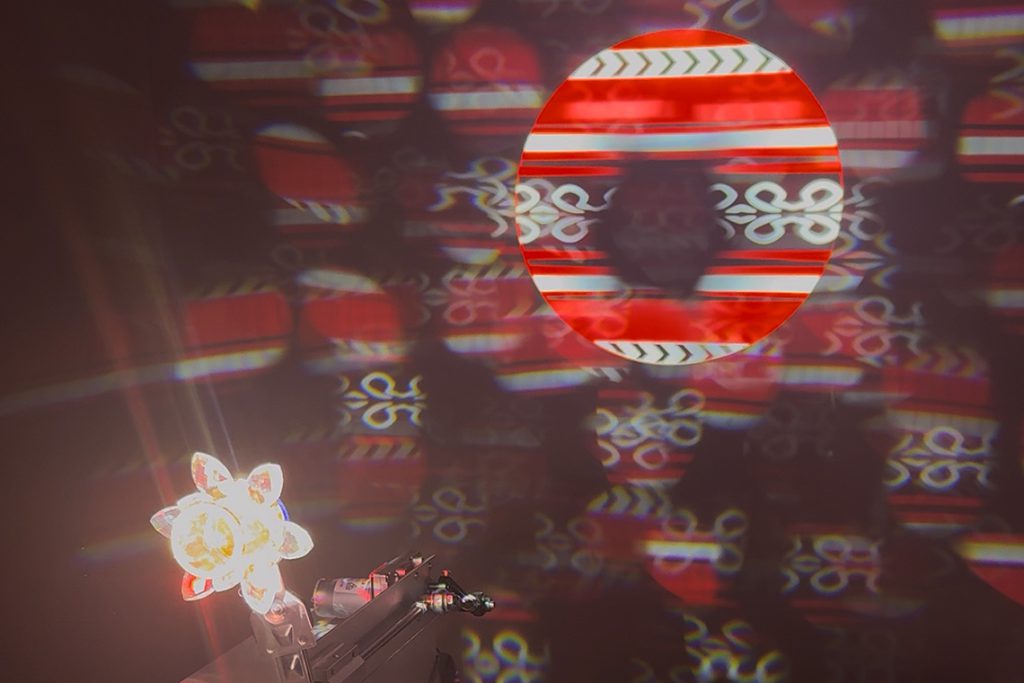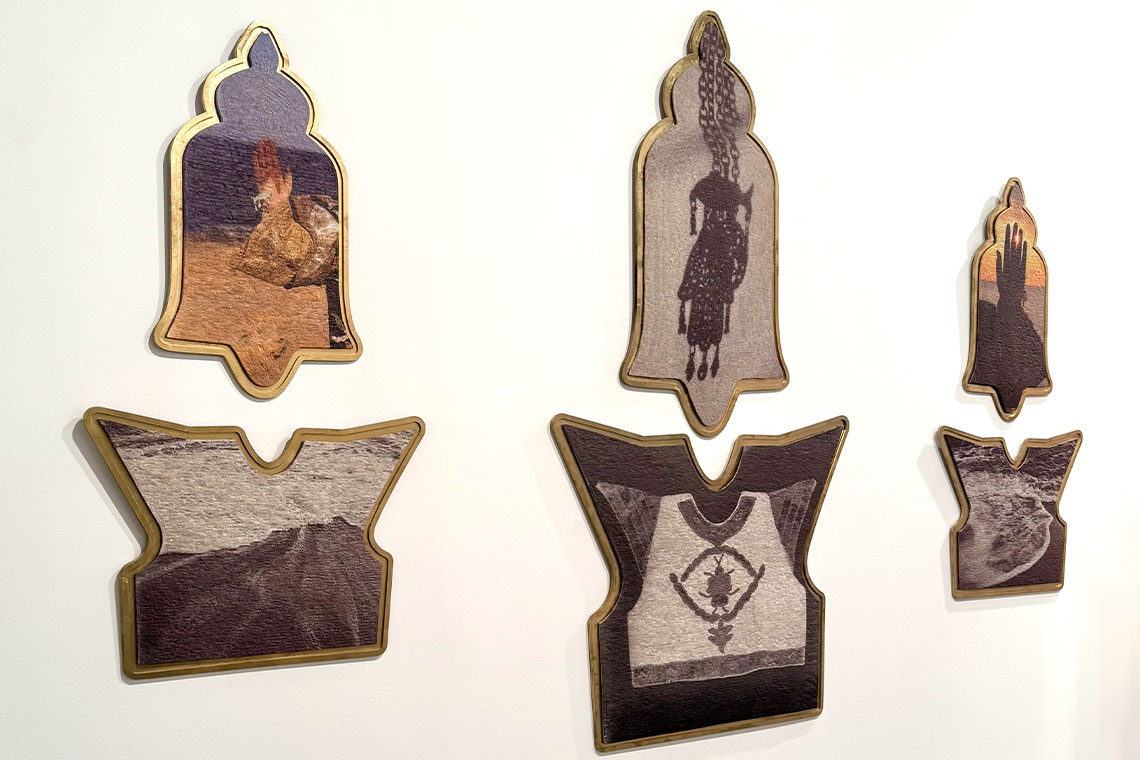In the capital of the UAE, Abu Dhabi Art returns for its final edition, showcasing global galleries, emerging artists and innovative projects.
Abu Dhabi Art opens its doors this year presenting 142 galleries from 34 countries, including 53 newcomers across four main halls and several subsections including, the Gateway exhibition, Beyond Emerging Artists, Art + Tech and more. In its final edition, the fair sets the stage for next year’s transformation into Frieze Abu Dhabi, signing a new chapter that promises fresh perspectives.
Upon entering, the visitor’s first impression begins in the Atrium, a curated spotlight on Nigeria as part of the fair’s Global Focus sectors. Developed in collaboration with the Nigerian Federal Ministry of Art, Culture, Tourism and the Creative Economy, the section sets a thoughtful tone. With kó, a Lagos based art space, returning as an exhibitor alongside a cohort of newer participants, this showcase highlights the country’s growing influence in contemporary art scene and its increasing visibility on the global stage. Featuring both emerging and established artists such as Samuel Nnorom and Nike Davies-Okundaye, the works span painting, mixed-media, sculpture and installations, offering a portrait of creativity and cultural storytelling that define the contemporary Nigerian art scene.
Alongside Nigeria, Türkiye is also spotlighted in Modern Türkiye, presenting works by modern masters such as Burhan Doğançay, as well as socially invested contemporary artists including Ömer Uluç and Cengiz Çekil, highlighting the nation’s ongoing influence on global art.

The Gulf, also part of the Global Focus sector, is easy to miss if one drifts too quickly through the fair, yet reveals itself as a quietly compelling highlight. Among the standouts are Hunna Art gallery’s group presentation entitled Ecologies of Being, featuring three artists: Zayn Qahtani, Alymamah Rashed and Joud Fahmy. Emerging Bahraini artist Qahtani’s Fool For You (2025) uses paper made from Bahraini date palms as its base, against which a striking red classically shaped heart – almost reminiscent of a playing card emblem – stands out with emotional precision. Within the same sector, Tunisian visual artist Amira Lamti offers another distinctive voice. Her mosaic pieces showcased at Yosr Ben Ammar Gallery’s booth looks almost like a puzzle structure. What appears to be painted mosaic reveals itself, on inspection, to be UV prints derived from Lamati’s own photographs documenting rituals and wedding ceremonies. A hand with Henna, fish and wedding jewellery can all be seen in her works, elements that invite viewers to reconsider the aesthetics of tradition.
Further along is the Gateway exhibition entitled Seeds of Memory – Migration as Ceremony, Survival, and Renewal, curated by Brook Andrew. It presents a thoughtfully constructed look at migration as both a collective and personal experience, and opens with a subtle sensory cue. The earthy smell of ube, a yam native to the Philippines, guides visitors inside a subsection curated by the Filipino collective Sa Tahanan Co..Cooking from a Migrant Memory Iteration II by artists Jou Pabalate and Alexis Convento situates migration within the everyday language of food. Through tactile and edible elements, ranging from BBQ-flavoured rice crisps to tamarind balls, the installation encourages a multisensory encounter that bridges memory and material culture.
Pabalate reflects on their mother’s migration to Saudi Arabia in the 1970s, while Convento brings their perspective of a second-generation Filipino in the United States, combining their narratives into a layered conversation on identity and belonging. The mixed reactions of visitors underscore the installation’s strength, rooted not so much in universal appeal but in the ability to introduce people to culinary traditions that offer a sensory gateway into cultures and histories.
Also part of the Gateway exhibition is Issam Kourbaj, who draws attention to the ways in which materials and by extension, humans migrate. The wall supporting his artworks is constructed from used cardboard collected during the fair’s installation process, while his artworks incorporate assemblage works such as fish tines and a refugee tent, turning ordinary objects into a meditation on migration and the fragile traces left behind.

This year, the fair introduces Art + Tech, a digital section that explores how contemporary art intersects with the digital world. Hosted by reimagined, a new initiative designed to advance the use of technology in the arts, the exhibition is divided into two showcases. The first, a curation entitled Blockchain Native, features international artists whose works have been made within the past four years. The second, Evolving Heritage highlights a collaborative project in which Dr Ahmad Alattar, a senior robotics engineer mentored university students. Over the course of the programme, the students developed skills in electronics, actuators and projection techniques, culminating in kinetic project-based installation. Traditional Sadu motifs central to Emirati heritage are digitally projected onto walls acting as canvases in a reimagining of cultural tradition through technology. The installation creates an immersive environment where heritage and technology converge, inviting visitors to get a closer look into the mechanics of digital production.
With the 17th edition marking the final year under the name of Abu Dhabi Art, the fair carries a sense of both culmination and anticipation. Over nearly two decades, it has grown into a platform that draws international and local galleries, emerging talent and local artists into a vibrant cultural conversation. Soon to become Frieze Abu Dhabi, the fair leaves us looking ahead with a half-smile. If the track record is any guide, Frieze will stir things up, but by how much, only the future will tell.



